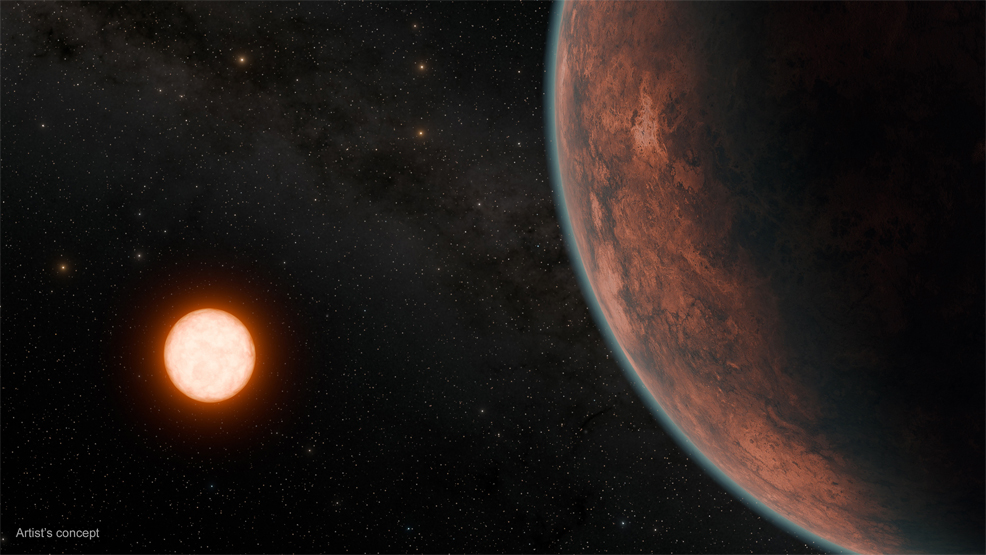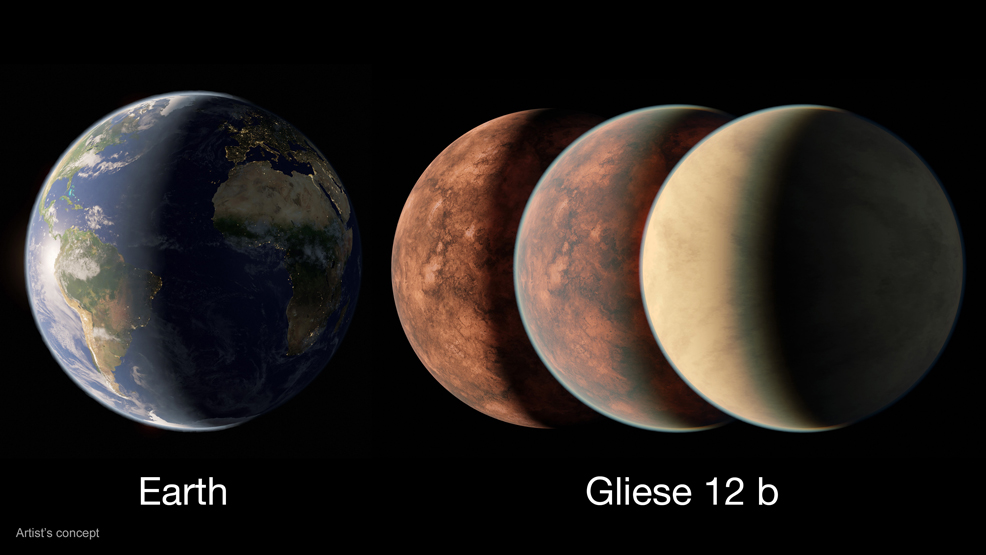
27th May 2024 Potentially habitable Earth-sized planet found 40 light-years away Astronomers report the discovery of Gliese 12 b – the nearest transiting, temperate, Earth-sized exoplanet found to date. Its equilibrium temperature is estimated at 42 °C (107 °F).
Two international teams of researchers used observations by NASA's Transiting Exoplanet Survey Satellite (TESS) and various other facilities to determine the location, mass, radius, and other characteristics of this new world. Gliese 12 b orbits an M-type red dwarf, a quarter the size and mass of our own Sun, with only 60% of the Sun's surface temperature. The system is 39.7 light-years away, making it relatively close in galactic terms. The data reveals that Gliese 12 b completes an orbit around its star every 12.8 days. The planet's mass is estimated at 3.87 times that of Earth. It is roughly between Venus and Earth in size, with a radius of 0.96 R🜨. While it could potentially be habitable, the presence and composition of an atmosphere (if any) are currently unknown. Without an atmosphere, its surface temperature would be 42 °C (107 °F). If it has an atmosphere, the surface temperature would be higher. Further studies may confirm this.
One important factor in retaining an atmosphere is the lack of storminess of its star. Red dwarfs tend to be magnetically active – resulting in frequent and powerful X‑ray flares. However, analyses by both teams conclude that Gliese 12 shows no signs of extreme behaviour. "Gliese 12 b represents one of the best targets to study whether Earth-size planets orbiting cool stars can retain their atmospheres, a crucial step to advance our understanding of habitability on planets across our galaxy," said Shishir Dholakia, a doctoral student from the Centre for Astrophysics at the University of Southern Queensland in Australia. A paper on this discovery appears in The Astrophysical Journal Letters.
Comments »
If you enjoyed this article, please consider sharing it:
|
||||||








